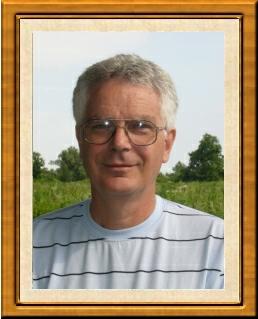Harry Wilhelm
TI-99/4A Programmer

Harry Wilhelm
TI-99/4A Programmer

Harry Wilhelm is a member of that select group of TI-99/4A Home Computer enthusiasts who found that when a book states that a certain procedure can not be done, they prove it wrong by proceeding to do it. This persistence resulted in his development of the bit graphic extension to TI Extended Basic known as The Missing Link. After starting with BASIC and Extended BASIC programming, Harry expanded his expertise to include assembly programming, and particularly assembly routines called from an Extended BASIC program. He often has been and continues to be sought out by other programmers to help with their problems.
It was in late 1983, after Texas Instruments had decided to pull out of the market for home computers, when Harry first acquired his TI-99/4A console with a cassette recorder. He added to this basic starting setup so that his system now includes a console with speech and 16-bit 32K memory built in, a PEB with 2 half-height drives, a TI disk controller and a Horizon 4000 Ram disk. Harry started to learn assembly language by studying the M. S. Morley and Peter Lottrup books and using the Mini Memory cartridge and the Line-By-Line Assembler program. His original EZ-Keys program was written with this set up. Many of his programs relied on his ability to rearrange VDP memory and to use interrupt driven routines.
Harry wrote a number of programs that were marketed commercially. These included:
He also wrote a number of other programs that appeared in MICROpendium and/or were released to the TI community. These included:
Harry graduated with a BA degree from Alfred University in 1974. For 20 years he was self employed as a cabinetmaker making high end furniture and kitchen cabinets. Some examples of his work appear in Design Book Two and Design Book Three, published by Taunton Press. After making an extremely small fortune at this, opportunity knocked and he was offered a job as a research technician with the Lab of Plasma Studies at Cornell University. Their experiments are designed to do basic research on the physics of Z pinch and X pinch wire implosions and the X-rays they produce.
He had no formal training in computers apart from one class in Fortran in 1973, but found the allure of programming the TI-99/4A to be irresistible. He loved finding out what made it tick! When the TI was discontinued, the experts predicted that it would be around for another year; two at the most. He is amazed me that, 25 years later, there is still such interest in our beloved machine!
In addition to writing programs for the TI, he also enjoys building and flying radio control model airplanes.
He has been married for 30 years to wife, Donna and live in a former one room schoolhouse in Lansing, NY. They have one son, Zachary, who is now 17. He says that “Programming him has been every bit as challenging, as interesting, and as rewarding as any thing I ever achieved on the ‘4A!”
Inducted into the TI99ers Hall of Fame on May 12, 2008